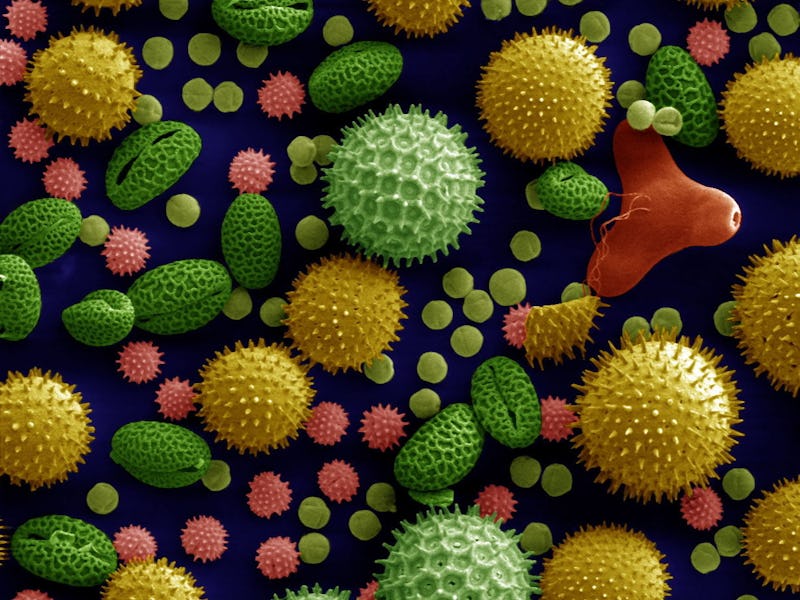What Do This Year's High Pollen Counts Mean? This Allergy Season Is for Real
Greasy spinning rods tell us how much plant sperm is in the air.

Now begins the season of sniffles, itchy eyes, and scratchy throats: Pollen counts from Atlanta to Vancouver are high. But what does “high” mean, exactly?
Before we know that pollen is high we’ve got to count it. The way we sample pollen is ingenious in its simplicity: A device called a Rotorod, a plastic strut that spins through the air with the mechanical fervor of a 2,400 rpm General Grievous slathered in silicone grease. As they twirl, the greased rods collect spores and the microscopic plant sperm we call pollen, to which our immune systems can overreact.
You can, in theory, set up a Rotorod anywhere outside. But for best results, says University of Tulsa aerobiologist Estelle Levetin in a guide on sampling pollen, the ideal location is three to six stories off the ground, on a roof with good airflow.
After a set period of time, typically 24 hours, researchers dunk the struts in pink Calberla’s pollen stain or another dye; the intensity of the dye equals the amount of pollen. Divide that by the volume of air sampled (a function of the size of the rods, the rotations per minute, and the total time spinning) and you get a concentration. Pollen counts are typically given as a number — particles of pollen per cubic meter of air. The higher the number, the worse for your leaky nasal cavities.
The record number? There’s some variation — not all counts are perfectly equal — but according to the American College of Allergy, Asthma, and Immunology, Atlanta’s 2012 spring saw a count as high as 9,369 pollen particles in a cubic meter.
But 2016’s counts won’t be a slouch, with high forecasts following a warm, El Nino-infused winter. Further into future also looks itchy: Climate change, according to an ecological model published in 2015, could blow ragweed pollen loads to 4 times their present concentration by 2050, as the weed flourishes in unusually early warmer weather.